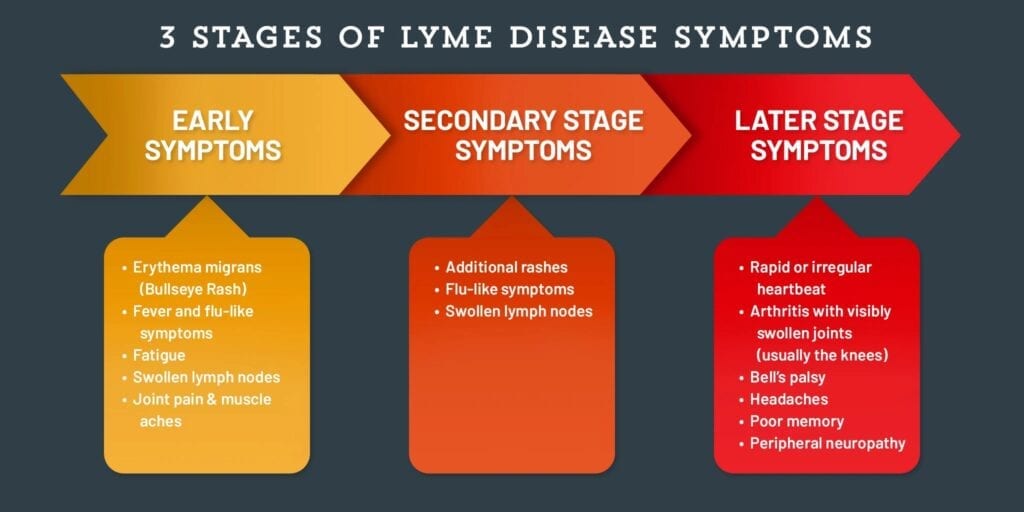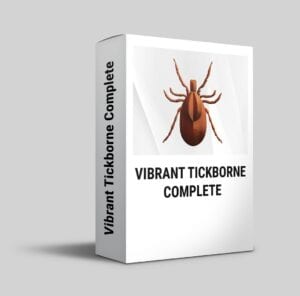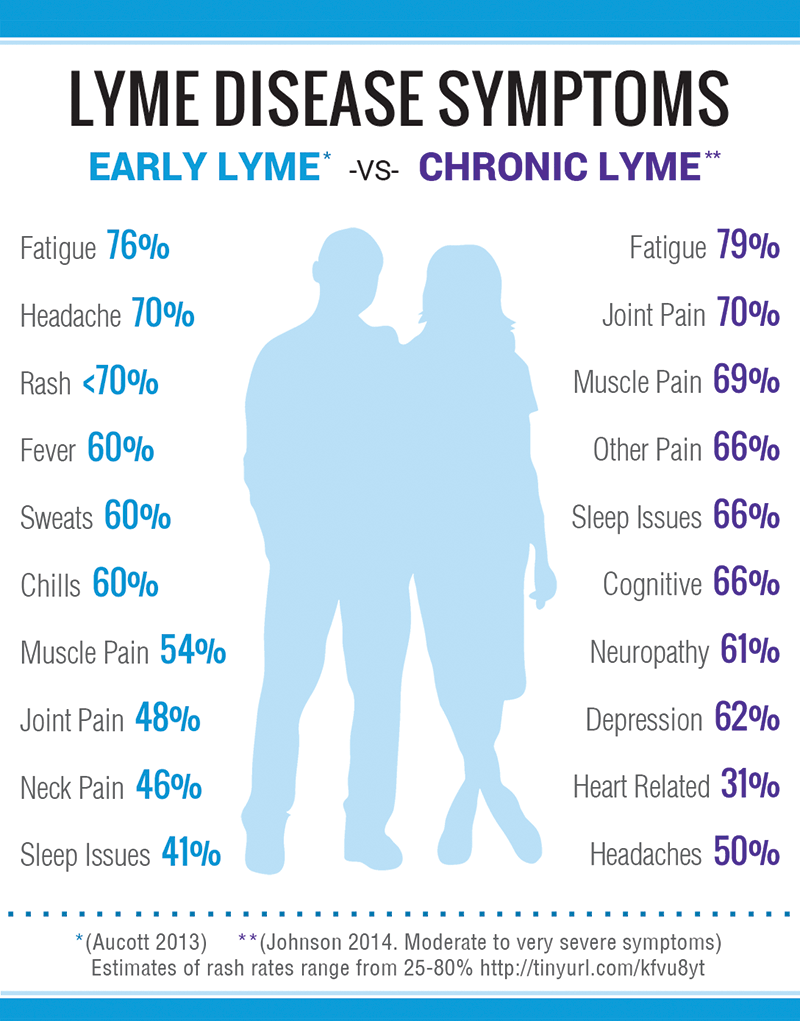
Lyme Disease and Tick-borne Disease- Why Should I Care?
You may be hearing more about Lyme Disease in the past few years, and with good reason. This insidious disease can result in complete debilitation, especially in the chronic phase. And we aren’t just talking Lyme Disease, but rather a whole host of tick-borne diseases (TBD) that are readily transmitted through the bite of a tick.
Now for some alarming statistics- Tick-borne diseases have more than doubled in 13 years and represent 77% of all vector-borne diseases reported.
And it’s estimated that only a third of people bitten by a tick ever see the classic “bullseye” rash.
The most common TBDs in the United States are Anaplasmosis, Babesiosis, Bartonella infections, Ehrlichiosis, Rickettsiosis, Rocky Mountain spotted fever (RMSF), and Lyme disease.
Based on recent numbers, Lyme Disease accounts for the majority (82%) of all TBD cases.
A single tick can transmit multiple pathogens, resulting in more severe symptoms and complexity in treatment!
Some of the multitude of symptoms related to TBD can include fatigue, muscle and joint pain, thyroid imbalances, GI issues, cardiac issues, anxiety, depression, and brain fog. Symptoms are often variable and increasing over time.
Many patients travel from healthcare provider to specialist seeking answers for the ever- increasing symptoms they experience.
Early treatment of TBD generally involves prescription antibiotics, and if treated properly a significant percent of patients will recover. The issue is that many of those infected either never show a rash or are not aware of a rash due to its location, and antibiotic treatment of chronic TBD is often not effective. Because many symptoms of TBD are general or mimic other conditions, these diseases often go undiagnosed for months or even years, increasing patient suffering and disease progression. And the pathogens responsible generally thrive in “biofilm”, a thin complex layer produced by the pathogen on the surface of our mucosa. These pathogens continue to reproduce, and can “recede” into biofilm, making them even more difficult to treat. Some antibiotics help to disrupt biofilm, thereby exposing more pathogens, but others actually result in increases in biofilm formation, so it’s important to know what we are dealing with when treating. In addition, there is no “one size fits all” when it comes to pharmaceutical or herbal treatment of these pathogens.
If you have had a “Lyme Disease test” and been told you “don’t have it”, be aware of several important points. First, the diagnostic test generally used is not very sensitive, and in fact only “catches” a little more than half of TBD infections. Second, scientists are continually uncovering new strains of TBD, making it difficult to stay current with effective diagnostics.
Preventing Tick-borne illness requires careful vigilance of both humans and pets.
Ticks usually need between 24 and 72 hours to effectively transmit any diseases they are carrying, so carefully examining yourself and your pets every day that you have spent time outdoors can be an effective means to prevent infection. The CDC website provides helpful information regarding prevention of tick bites- https://www.cdc.gov/ticks/avoid/on_people.html
If you do suspect TBD, I recommend you have a thorough detailed evaluation from a licensed healthcare provider familiar with the nuances of Tick-borne disease. I treat many TBD patients, and believe the Functional Medicine approach is critical to effective evaluation and treatment because these diseases are multi-symptom, multi-organ and require a thorough “whole body” approach- and that’s exactly how we approach our patients.
If Tick-borne disease is suspected based upon your symptoms and previous diagnostics, additional testing may be indicated. There are a number of newer diagnostic tests available that are more accurate and comprehensive. As an example, one of the tests I may recommend is the Vibrant Tick-Borne Disease Panel. I’ve included detailed information on the Vibrant test below to give you an idea of the comprehensive nature of the panel. There are other diagnostics as well- to be discussed in future blogs.
As far as treatment of chronic TBD- Tick-borne disease can be treated, but it requires a lifelong dedication to focusing on health. Treatments must be comprehensive, addressing both symptoms and eradication of the pathogen. There are a multitude of pharmaceutical, herbal, and nutraceutical treatments to address TBD. As a Functional provider, it is important to me to treat each patient as a unique individual with specific needs, and to tailor treatment options in that manner.
This potentially debilitating group of diseases can be effectively treated with a comprehensive Functional approach that considers the patients’ individual physiological and psychological needs. The first step in any chronic disease is to have a thorough medical evaluation to help identify the disease, followed by an ongoing comprehensive treatment plan that changes over time to meet your ever-changing symptoms. Please forward any questions you may have or contact our office to discuss your particular concerns. Be well!
VibrantWellness Tickborne Panel 2.0 (4 panels)

About the Test
The Vibrant Tickborne Diseases panel is the first of its kind to be run on a silicon micro-array platform, providing the highest level of specificity and sensitivity in the industry for detecting tickborne diseases.
Patients often present with a range of non-specific symptoms that may be Lyme, or other conditions that have symptom overlap. Patients with diagnosed Lyme may also experience resurgence of symptoms, which might suggest co-infections. Co-infections are complex and should be included in an initial screen of Lyme and related illnesses.
Vibrant has the most comprehensive antibody (indirect) and DNA (direct) test for detection of Lyme and co-infections that, in most cases, can assist the clinician in assessing these situations and lead to the correct diagnosis.
Markers Measured
Because standard treatment for tickborne diseases usually involves courses of antibiotics that are prolonged, this can also leave the patient at risk for multiple chronic inflammatory symptoms or conditions due to impact to the microbiome. It is recommended that patients being treated for tickborne diseases undergo regular microbiome screening during antibiotic therapy, such as the Vibrant Gut Zoomer or Vibrant Gut Pathogens tests.
All Vibrant Tickborne testing is performed on our proprietary microarray platform:
All four panels below can be ordered individually or bundled in combinations based on provider preference.
Lyme Plus TBRF (IgG & IgM)
Borrelia burgdorferi VlsE1
Borrelia burgdorferi C6 peptide
Borrelia burgdorferi p18 (DbpB)
Borrelia burgdorferi p23-25 (OspC)
Borrelia burgdorferi p28
Borrelia burgdorferi p30
Borrelia burgdorferi p31 (OspA)
Borrelia burgdorferi p34 (OspB)
Borrelia burgdorferi p39 (BmpA)
Borrelia burgdorferi p41
Borrelia burgdorferi p45
Borrelia burgdorferi p58
Borrelia burgdorferi p66
Borrelia burgdorferi p83-93
Borrelia burgdoferi B31 WCS
Borrelia burgdoferi 297 WCS
Borrelia mayonii
Borrelia afzelii BmpA
Borrelia afzelii DbpA
Borrelia afzelii OspA
Borrelia afzelii OspC
Borrelia afzelii p100
Borrelia garinii DbpA
Borrelia garinii OspC
Borrelia bavariensis DbpA
Borrelia bavariensis p58
Borrelia bavariensis VlsE1
Borrelia spielmanii DbpA
Borrelia spielmanii OspC
Borrelia hermsii
Borrelia turicatae
Borrelia miyamotoi
Borrelia andersonii
Borrelia maritima
Borrelia californiensis
Borrelia bissettiae
Borrelia lusitaniae
Borrelia valaisiana
Borrelia yangtzensis
Borrelia turcica
Lyme plus TBRF (PCR)
Borrelia burgdorferi
Borrelia mayonii
Borrelia afzelii
Borrelia garinii
Borrelia bavariensis
Borrelia spielmanii
Borrelia hermsii
Borrelia turicatae
Borrelia lonestari
Coinfections 1 (IgG & IgM)
Babesia microti IRA
Babesia microti p32
Babesia microti p41
Babesia microti WCS
Babesia duncani
Bartonella henselae 17 kDa
Bartonella henselae 26 kDa
Bartonella henselae SucB
Bartonella elizabethae
Bartonella vinsonii
Bartonella quintana
Anaplasma phagocytophilum Msp5
Anaplasma phagocytophilum Msp2 (p44)
Anaplasma phagocytophilum OmpA
Ehrlichia chaffeensis
Coinfections 1 (PCR)
Babesia microti
Babesia duncani
Bartonella henselae
Bartonella elizabethae
Bartonella vinsonii
Bartonella quintana
HGA Anaplasma phagocytophilum
HME Ehrlichia chaffeensis
Coinfections 2 (IgG & IgM)
Rickettsia typhi OmpB
Rickettsia typhi Surface antigen
Powassan Virus
Tickborne Encephalitis Virus
West Nile Virus
Chlamydophila pneumoniae
Coxsackie Virus
Mycoplasma pneumoniae
Coinfections 2 (PCR)
Rickettsia rickettsii
Rickettsia typhi
Powassan virus
Tickborne Encephalitis Virus
West Nile Virus
Chlamydophila pneumoniae
Coxsackie virus
Mycoplasma pneumoniae
Opportunistic Infections (IgG & IgM)
Cytomegalovirus EIA Antigen
Cytomegalovirus GlyB
Cytomegalovirus p150
Cytomegalovirus p28
Cytomegalovirus p52
Cytomegalovirus p65
Cytomegalovirus p38
Epstein Barr Virus EA Antigen
Epstein Barr Virus EBNA1
Epstein Barr Virus VCA gp125
Epstein Barr Virus p18
Epstein Barr Virus p23
Parvovirus B19 VLP VP2
Parvovirus B19 VLP VP1/Vp2 Co Capsid
Toxoplasma gondii Crude Extract
Toxoplasma gondii MIC3
Toxoplasma gondii p24
Toxoplasma gondii p29
Toxoplasma gondii p30
HSV-1
HSV-2
HHV-6
HHV-7
Streptococcal A
Opportunistic Infections (PCR)
Parvovirus B19
Toxoplasma gondii
Sample report:

